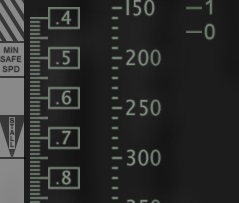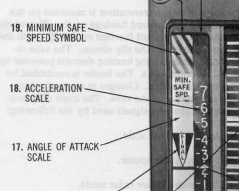

alexis99
HAT IN THE RING-
Posts
464 -
Joined
-
Last visited
-
Days Won
1
Content Type
Profiles
Forums
Gallery
Downloads
Store
Everything posted by alexis99
-

RECON AIRCRAFT KOREAN WAR
alexis99 replied to alexis99's topic in Thirdwire: Strike Fighters 2 Series - General Discussion
I found this book on Amazon. They were selling at £50 or £5.90. I popped the £5.90 version into my basket, and that's when the cover of the book was shown. I suddenly realised I had seen the cover before and went to one of my bookshelves, and there it was. I had been quite obsessed with the Shooting Star 20 years ago, and had accumulated several books on the subject, but had clearly forgotten about them. I read Chapter 5, TACTICAL RECONNAISSANCE ROLE, but did not see your quote. Perhaps that's in the introduction. And in this chapter, surprisingly, there is no description of Photo Recon technique. However, there are many photos of the RF-80 and not one has the Gunsight assembly. So I feel I am correct in removing that from the cockpit. What had confused me was the little hole in the nose of the aircraft. I originally assumed it would be for the periscope, but now I know there is no periscope. In fact it's the K-22 Dicing Camera, which was for close-up shots of individual targets. This information comes from a review of the Hobby Boss model. So I guess you nose down and do a dive on specific targets and crack off some film. I find a gaffer tape cross on the windshield helps in lining up. Anyway thank you all for your help in clearing all of this up -

RECON AIRCRAFT KOREAN WAR
alexis99 replied to alexis99's topic in Thirdwire: Strike Fighters 2 Series - General Discussion
I was thinking that if an aircraft like the Photo-Recon Sabre had no periscope, then the cockpit would look something like my picture below. Since this aircraft had no guns, it seems likely that the valuable Gunsight would have been removed, possibly to be used on another aircraft. The Collimator glass would remain, since it serves as protection for the pilot. On the outside view of this aircraft from the Combat Ace Korean Air War package, the two cameras appear to point directly down 90 degrees from the horizontal. I would assume they are wide-angle, so that's generally 60 degrees. In SF2 you would therefore flick the pretend camera switch (yes of course I've got one) at about 2 to 1 mile from the target at 10,000 ft, approx 400 KIAS. I need to check this figures with my Banshee and Panther Photo-Recon aircraft which can be fitted with either a 30 degree forward or 90 degree down camera. (Unfortunately, due to SF2 limitations, it cannot carry the two settings). So are my speculations correct, or am I totally out-of-whack? I kind of like this version of the cockpit. -

RECON AIRCRAFT KOREAN WAR
alexis99 replied to alexis99's topic in Thirdwire: Strike Fighters 2 Series - General Discussion
Yes, sorry about the confusion. From now on, for ease of use I will refer to it as a HUD glass. -

RECON AIRCRAFT KOREAN WAR
alexis99 replied to alexis99's topic in Thirdwire: Strike Fighters 2 Series - General Discussion
In England we spell it Collimator. But it's no biggie. I am not confused. -

RECON AIRCRAFT KOREAN WAR
alexis99 replied to alexis99's topic in Thirdwire: Strike Fighters 2 Series - General Discussion
SF2 calls it a HUD in the Cockpit.ini whether it has discretes or not. I just went along with that. -

RECON AIRCRAFT KOREAN WAR
alexis99 replied to alexis99's topic in Thirdwire: Strike Fighters 2 Series - General Discussion
Yes I have mods for all the USAF, USN and Marines aircraft that had periscopes. They were very accurate. It's the ones without periscopes that intrigued me. -

RECON AIRCRAFT KOREAN WAR
alexis99 replied to alexis99's topic in Thirdwire: Strike Fighters 2 Series - General Discussion
Thanks, I'll get it. -

RECON AIRCRAFT KOREAN WAR
alexis99 replied to alexis99's topic in Thirdwire: Strike Fighters 2 Series - General Discussion
Did it have the Gunsight assembly though? All the photo-recon aircraft in SF2 have the Gunsight and HUD glass intact. I thought that if it was a photo-recon aircraft then they would have been removed, even if a scope was not fitted. The most important thing was getting the valuable cameras and even more valuable film back to base, not dicking around duelling with AA. -

RECON AIRCRAFT KOREAN WAR
alexis99 replied to alexis99's topic in Thirdwire: Strike Fighters 2 Series - General Discussion
Okay, by HUD, I meant the HUD Glass. The thing that the gunsight is projected on. I felt it was more easily understood by everyone as a HUD, but if you want to give me the correct nomenclature, I will use it. I was thinking that rather than a projection onto the glass, maybe the glass had reticle lines drawn on it, maybe a circle to show you the general area covered by the cameras if you went into a shallow dive. Perhaps they didn't dive, perhaps they kept to the standard level flight at between 8,000 and 10,000 ft that the F9F-5P operated at . Or maybe the 15,000 ft that the F2H-2P operated at. I can see that if you have the target ahead of you and you know your distance to the target, you can calculate when to start recording at your given height. If you fly either the Banshee or the Panther Photo Recon aircraft, you could work out from their results at what point the target is passing into the camera field of view, and when it reaches the Nadir. I'd love to know which Meteor book. The only one I have is "Meteor from the Cockpit" by Peter Caygill and all I remember is that it was a dangerous aircraft to land because the gears came down separately, not simultaneously, so using the airbrake was a no-no. In SF2 the Meteor is a MiG-killer, but according to the book the real one had a lot of problems. Anyway, I'd better read it again. -
How do Shooting Star and Sabre Jet Photo-Recon pilots know when they should initiate camera recording if they don't have a periscope viewer in the cockpit? The F2H-2P Photo Banshee has a set of cameras installed in the nose, and an optical periscope to enable the pilot to see an area of coverage marked with discretes on his scope. Same with the F9F-5P Photo Panther. In Vietnam you had the RF-101C, RF-4C, RF-8G all with periscopes for the pilot, and the RA-5C with a periscope for the backseater. But the Shooting Star and Sabre Jets had cameras, but no periscope system. So how did they know if their target was within range of the cameras. Were there discretes on the HUD, or was it done by specific height and timing. Does anybody know? Thank you
-

Cockpit/Clouds Shadows
alexis99 replied to muhammad's topic in Thirdwire: Strike Fighters 2 Series - General Discussion
HOW RUDE -

Cockpit/Clouds Shadows
alexis99 replied to muhammad's topic in Thirdwire: Strike Fighters 2 Series - General Discussion
The topic is about casting shadows and moving shadows. It's a description of something one sees in real life. If the technical term in games is dynamic shadows, then thanks for sharing. In the real world we call them moving shadows. If you're watching the sun going down over a beautiful vista, you might say to your girlfriend "Look how the shadows are moving as the sun descends". A nerd would say "Cool dynamic shadows". But he wouldn't have a girl next to him to say it to. -

Cockpit/Clouds Shadows
alexis99 replied to muhammad's topic in Thirdwire: Strike Fighters 2 Series - General Discussion
A moving shadow is a shadow that moves. You see a shadow in the cockpit and as you turn the aircraft the shadow moves across the cockpit. It's pretty basic stuff. -

Community MOST WANTED
alexis99 replied to UllyB's topic in Thirdwire: Strike Fighters 2 Series - General Discussion
And the cockpit issue? Making cockpits is really time consuming, and involves a lot of numbers according to the experts. -

F-105D AOA tape error
alexis99 replied to alexis99's topic in Thirdwire: Strike Fighters 2 Series - General Discussion
Okay well, let madvad post it, or you can post it. I'm not interested in being credited -

F-105D AOA tape error
alexis99 replied to alexis99's topic in Thirdwire: Strike Fighters 2 Series - General Discussion
There you go TAPES_F-105D.7z -

Community MOST WANTED
alexis99 replied to UllyB's topic in Thirdwire: Strike Fighters 2 Series - General Discussion
So that's the next aircraft to be built for this site? The AIDC F-CK-1 Ching -Kuo. -
The original F-105D series has an error in the AOA tape. The discrete reads "STALL", and is incorrect. As you can see in this picture from the Flight Manual, it should read "FINAL" As mine now does. It is important to recognise that this triangle is not a stall warning, because if you believe it is, you will be flying incorrectly. The MIN SAFE SPD warning and the diagonal hatch above are the stall warnings. The FINAL is the area that should be placed on the marker when you come in to land at the correct speed, altitude and fuel state in order to achieve a perfect landing. It is the FINAL APPROACH MARKER. If you think it's a STALL warning and try to avoid it, you'll come in badly. It is also useful when taking off, as once you reach 130 Kts rotate speed, you can pull the nose up until the marker is in the "FINAL" triangle, and the aircraft smoothly lifts off at the correct speed.
-
Okay, good to know. I can't remember whether SF1 or SF2, but the Crusader F-8E would go straight through the carrier deck on landing. Odd things do happen, but you just shrug them off and move on, so I can't quote which carrier or any other details. Maybe that was back when I wasn't flying hard fuel usage, and used to zap to the final waypoint. In the above situation, I think one needs to look at the carrier catapult settings. On a real carrier, you adjust the catapult tension for the weight of each individual aircraft. You can't do that in SF2. But sometimes it's too strong and you leave the deck at 180 kts, and sometimes it's too weak, and well, perhaps you roll into a weak part of the deck.
- 14 replies
-
- super hornet
- operation hydra
-
(and 1 more)
Tagged with:
-
Sorry to bring this up again, but the original release of Super Hornet BlkI and II had the fuel loads in the Data file erroneously written in pounds, when it should have been kilograms. If this hasn't been patched, then the Super Hornet in SF2 is an extremely heavy aircraft, and maybe the deck can't handle the weight. These are the fuel amounts in Kilograms that should be in the data file. [FuselageFuelCell1] MaxFuelAmount=1080 [FuselageFuelCell2] MaxFuelAmount=1180 [FuselageFuelCell3] MaxFuelAmount=1188 [FuselageFuelCell4] MaxFuelAmount=1715 [RightWingFuelCell1] MaxFuelAmount=753 [LeftWingFuelCell1] MaxFuelAmount=753
- 14 replies
-
- super hornet
- operation hydra
-
(and 1 more)
Tagged with:
-

Canopy Animation
alexis99 replied to alexis99's topic in Thirdwire: Strike Fighters 2 Series - General Discussion
I don't know what that means. I can post the AOA figures that I've fixed. I can post the correct fuel loadouts and corrected fuel gauges that I've done over time. The Lightning F6 was the last fuel gauge correction I did, but I've done so many that I can't remember. And when I post any information, people tell me it's old news, and I should stop whining. Sorry for the whining I just did. -

New SF2 addiction...
alexis99 replied to sixstrings's topic in Thirdwire: Strike Fighters 2 Series - General Discussion
It's not an issue. I just wondered what would happen if I put a paratrooper on a B-26 wing station. I thought it was funny. Naturally, I won't make a habit of doing this. However, you are absolutely correct about SpecificStationCodes. YAP needs a bit of work here and there. Nothing serious. There's no A-7E, so I'll just put one in. And some of the cockpits of existing aircraft, where I've enhanced the graphics and generally cleaned up, I am putting in the YAP aircraft. There's going to be a lot of fun ahead. -

New SF2 addiction...
alexis99 replied to sixstrings's topic in Thirdwire: Strike Fighters 2 Series - General Discussion
A thousand thanks. I bit the bullet and downloaded the free Yankee Air Pirate mod. Such a plethora of really cool feature to play with. All the appropriate aircraft have animated brake chutes, canopies, and refuel probes. There is even one where the ammunition loading panel opens up to reveal the gun. Not important to flying a mission, but cool nonetheless. It has Vietcong troops ready to be cluster-bombed, and paratroopers and other friendly ground troops are available to go into transport aircraft. You can actually load soldiers onto underwing racks in bombers, which looks really stupid, but I had to try. It's what you call a cornucopia -

Drogue Chute, Drag Chute
alexis99 replied to alexis99's topic in Thirdwire: Strike Fighters 2 Series - General Discussion
Well, I have the visual models of brake chutes installed now. I realise this may be old news, but the Yankee Air Pirate Mod has brake chute animations which are triggered by the Bay-door command. Ctrl+O. They are installed on all the Vietnam aircraft that should have them. There's a lot of other cool stuff that the modders have come up with in that free-to-download package. This is why I've always whined about the general modder community not working together to share discoveries that every modder could use.






